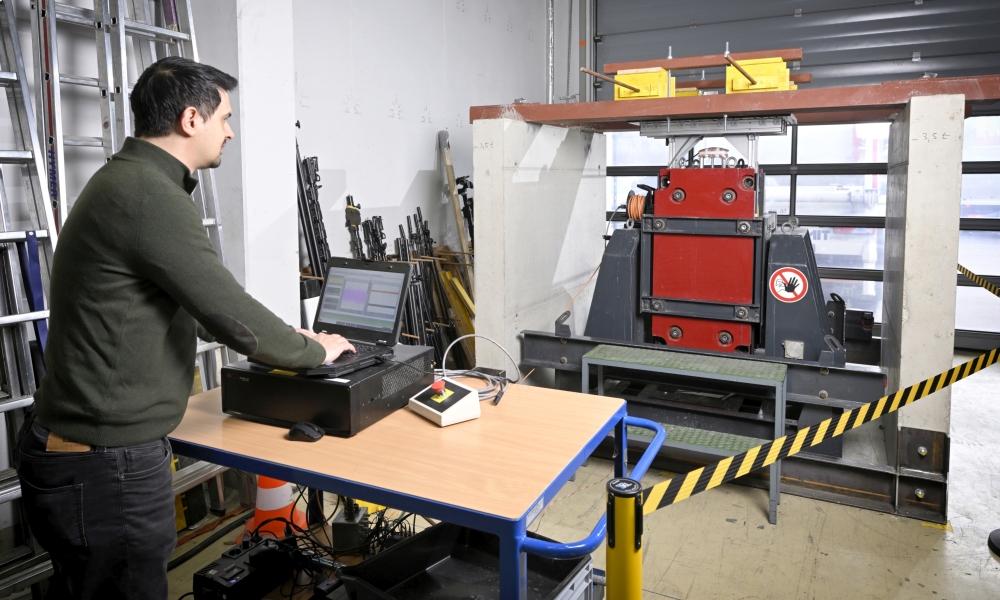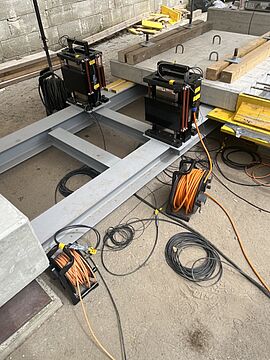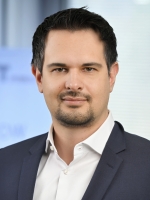Concreting under traffic
The COUNT (Concreting under traffic) project supports the ambitious goal of preserving the considerable existing stock of transportation infrastructure through efficient rehabilitation, thereby saving significant amounts of CO2 compared to new construction. The focus is on extending the service life of existing structures such as road or rail bridges, thereby avoiding road closures for new construction and at the same time making a sustainable contribution to reducing environmental impact.
Reinforced concrete structures are subject to high requirements in terms of structural safety and durability. A potential problem with such structures are weak points that allow water, de-icing salt or similar substances to penetrate. These occur as a result of various stresses over time and impair the load-bearing capacity and durability of reinforced concrete, necessitating extensive rehabilitation or even new construction.
Concreting under traffic: Efficient rehabilitation without road closure
The major challenge in rehabilitation measures on bridges is that the concrete requires "rest" during hardening and the bridge therefore often has to be closed for this time. COUNT aims to enable concreting on bridges while traffic is still moving. This is to avoid closures or costly support structures under concreting joints.
As part of the project, this innovative rehabilitation method will be tested for the first time under real conditions. For this purpose, test specimens are systematically excited to vibrate using the Mobile Seismic Simulator (MoSeS) of the AIT. In further test series, reinforced concrete slabs are shaken to investigate the effects of vibrations on the interaction between concrete and steel. After a 28-day hardening phase, comprehensive investigations will be carried out by Smart Minerals in order to analyze effects on strength and durability and to be able to derive structural changes due to the vibration excitation with accompanying microscopic investigations. The main common goal of the project is to define a limit value for harmless vibrations during concrete hardening. Different types of vibration as well as concrete formulations used in practice are at the center of the investigations in order to apply the knowledge gained in a targeted manner for future repair work.
Innovative measurement technology for authentic results
An important aspect of the project is the applied measurement technology. Thus, real vibration signals are used to obtain authentic results. In addition, fiber optic measurement is used, in which glass fibers are embedded in the concrete to record vibrations and crack formation. Project coordinator Smart Minerals analyzes the different concrete samples using thin-section microscopy as part of the project.
The specific occasion for the project was the rehabilitation of the Neilreich Bridge on the Wiener Südosttangente, where an urgent need for concreting under traffic became apparent. The COUNT project, which is scheduled to run for two and a half years, was then initiated in cooperation between Smart Minerals and AIT and launched as an FFG industry project.
Top-class consortium from industry and research
In the COUNT project, contractors, the construction industry, planning and research are working closely together. With the consortium consisting of ASFINAG, ÖBB, MA 29, PORR, STRABAG, HABAU, Doka, IBBS-ZT GmbH, KMP-ZT GmbH and Mayer Ingenieurleistungen ZT, Smart Minerals and AIT can refer to comprehensive expertise in the fields of construction dynamics, concrete technology and transport infrastructure and thus jointly develop innovative solutions for concreting under traffic in order to reduce the CO2 footprint in the field of transport infrastructure.
As a scientific partner, the AIT Austrian Institute of Technology is contributing its expertise in the fields of construction dynamics and vibration forecasting. The AIT experts are thus instrumental in defining a limit value for vibrations that keeps the concrete-steel bond stable and thus enables concreting under traffic.
As a link between science and the construction industry, Smart Minerals GmbH is focusing for the first time in the project on concrete technology on the relationship between the strength of concrete, the concrete-steel bond and the concrete-concrete bond under a defined vibration excitation. "Of great relevance is the assessment of possible structural damage when a limit value to be defined in the project is exceeded," says project manager Lukas Hausner, Smart Minerals.
"Extending the life cycle of transport infrastructure structures is a very crucial contribution on the way to climate-compatible mobility. The knowledge gained and techniques developed in the COUNT project can be used in refurbishment projects in the future to minimize the carbon footprint while maximizing the lifetime of the structures," says Christian Gasser, project manager at AIT.
Funded by the Federal Ministry for Climate Protection, Environment, Energy, Mobility, Innovation and Technology (BMK) and the Austrian Research Promotion Agency (FFG).





